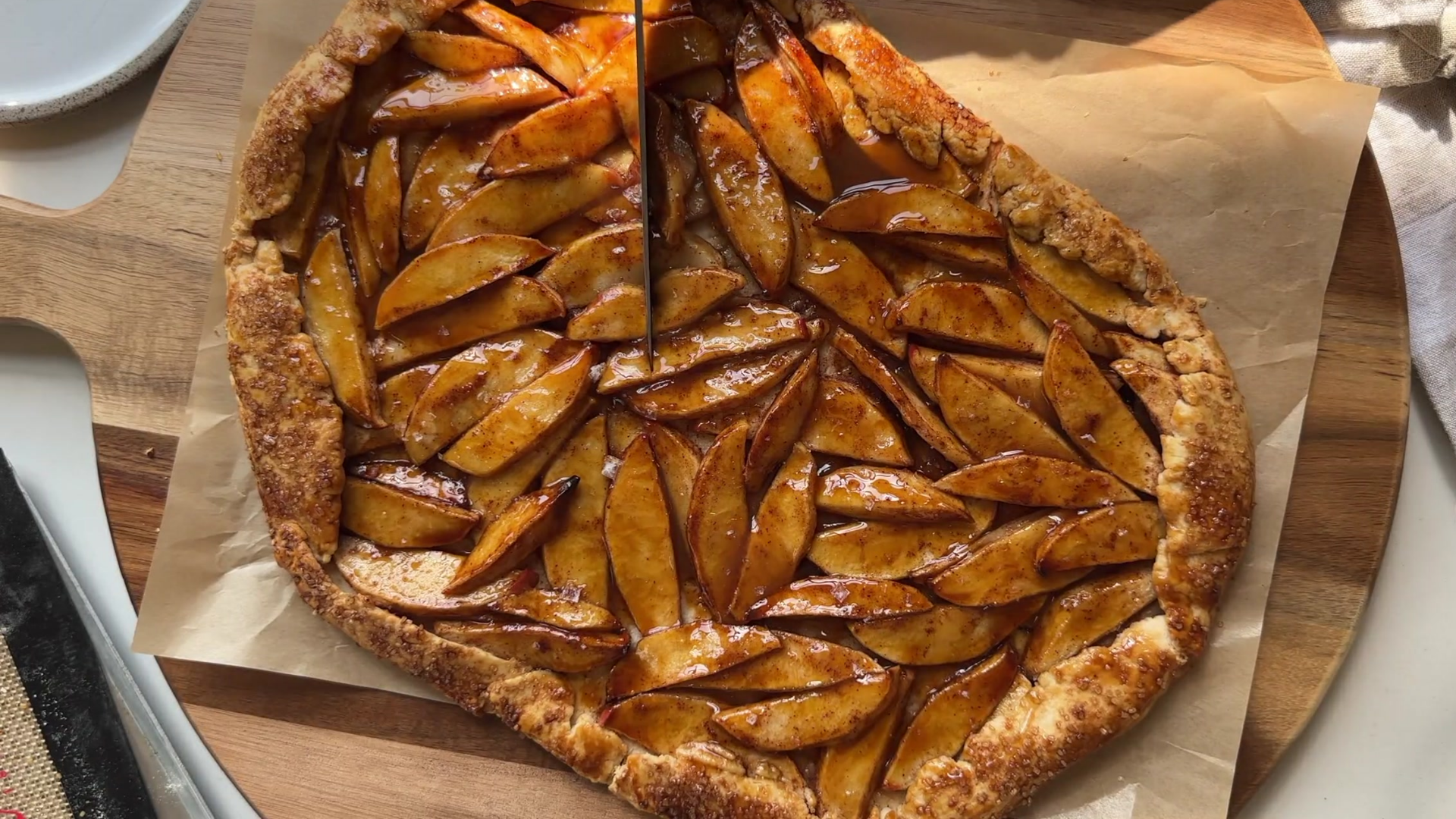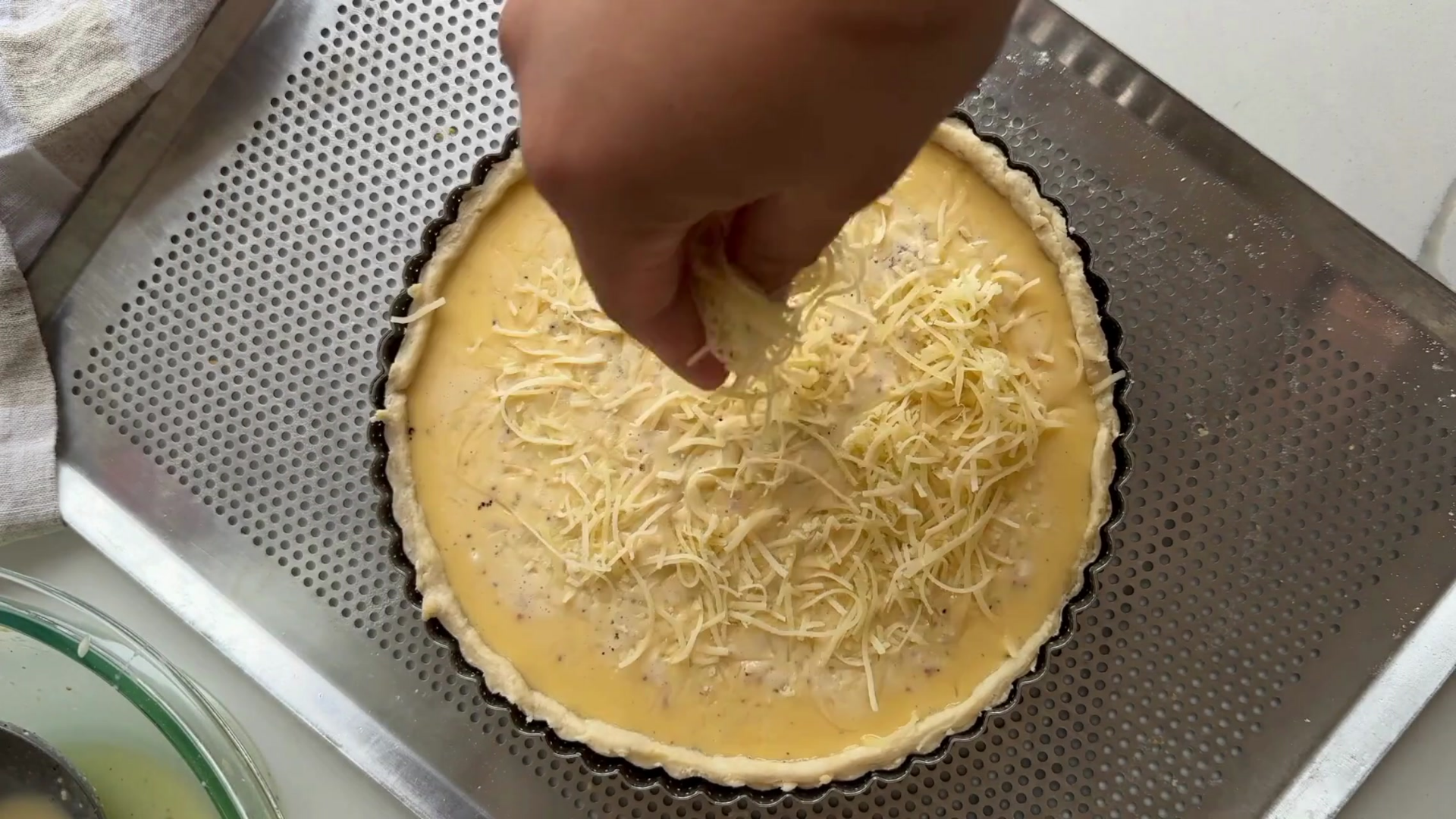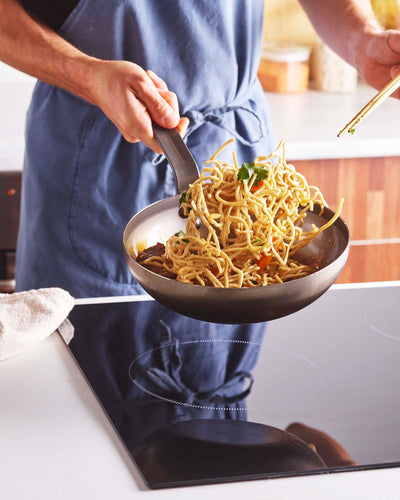Fried rice is a quick, flavorful dish that’s customizable to your preferences. The best fried rice recipe uses day-old rice and is prepared in a wok.
Use this article to make delicious fried rice in a wok, including ingredients, techniques, and tips for success.
The Foundation: Perfect Rice for Fried Rice
It’s all in the name. The most important aspect of fried rice—whether it’s chicken fried rice, egg fried rice, or plain fried rice—is the rice.
The best rice to use is day-old, cold rice. This rice is drier and less likely to clump. Warm, fresher rice tends to be wetter and is likely to stick together. Clumpy rice is the enemy of good fried rice. It prevents each granule from being coated with delicious sauces and spices.
For best results, your rice should also be as dry as possible. If you're forced to use rice fresh from the rice cooker, you must take a few additional steps to prepare it.
- Cook rice using your method of choice.
- Spread fresh rice in a thin layer on a rimmed baking sheet.
-
Let the rice steam dry for 15 to 20 minutes.
In an ideal world, you will have leftover rice that was left uncovered in a refrigerator overnight. Take the rice out and massage any clumps with your hands. Make sure your hands are completely dry. You do not want to introduce moisture to the rice.
The type of rice you use also matters. Shorter-grain rice, like sushi rice, tends to be starchier, which predisposes it to clumping. Long-grain white rice, like basmati, can be slightly difficult to stir-fry. The grains may break during frying and aren't as thick as medium-grain rice, meaning they don't take on as much flavor. However, basmati rice will still work in a pinch.
The best rice variety is jasmine rice or any other type of medium-grain white rice. These types of rice hold flavor and shape during the cooking process.
Armed with the perfect rice, you can now heat your oil and cook your rice in one to two-cup batches. Stir-fry until you reach a golden-brown color in your rice. Move rice batches up the sides of the wok to warm after stir-frying it or remove it from the pan altogether, adding it back in at the end of the rice cooking process.
You can prepare all your other ingredients with the rice in the wok. Just make sure the rice is pressed against the sides of the wok. If left in the center, it will burn.
Mise en Place: Setting Yourself Up for Success
Stir-fried rice, like all stir-fried dishes, cooks quickly. You don't have time to chop and prep ingredients during the cooking process. Use the French preparation technique "mise en place," meaning "everything in its place," to get all your ingredients ready and waiting.
The star of the show is still rice. These add-ins should enhance the rice, not distract from it.
Protein Options
Popular choices include chicken, shrimp, pork, and tofu. Evenly chop the proteins. You may use precooked protein or cook the protein in your wok. If raw, sear proteins in the center of the wok.
You will move the protein up the side of the pan to warm while preparing the rest of the ingredients. The exception is tofu. This plant-based protein is exceptionally delicate even when seared. After cooking, remove the tofu from the wok and set aside. Add the tofu back in at the end.
Vegetables and Aromatics
Minced garlic, ginger, and sometimes shallots are aromatics that boost flavor. Add them in after cooking your protein, and let them bloom in the oil. This will release and distribute the flavors throughout the entire dish.
It's important to dice your vegetables into uniform sizes for even cooking. Common and complementary vegetables include:
- Peas
- Carrots
- Onions
- Garlic
- Scallions
-
Bell peppers
A good tip is to use frozen peas instead of fresh peas. They tend to turn out mushy when fresh. Once cooked, add your mixed vegetables and aromatics with the rice and protein. Move the mixed dish up the side of the wok to warm.
Egg Incorporation
Eggs are such a staple in fried rice that it almost feels mandatory to add one or two. There are several ways to incorporate them, but this is the easiest and most effective method.
Push the rice to one side of the wok, add oil to the exposed surface, then crack an egg directly into the center. Scramble it using the edge of your spatula, breaking it into small pieces as it cooks, and then toss it through the rice for even distribution.
Sauce Essentials
The sauce gives rice that distinct, umami flavor. Use a combination of dark soy sauce, light soy sauce, oyster sauce, sesame seed oil, and Shaoxing rice wine (optional). Add soy sauce with a light hand. It's a flavorful sauce; adding more soy sauce than you need will drown out the other flavors and make your rice soggy.
Using Your Wok to Make Fried Rice
A large cast iron pan or stainless steel frying pan isn't the ideal vehicle for fried rice. A wok is a traditional cookware item for stir-frying rice.
Here's how to use it.
Wok Preparation
Seasoning your wok builds a natural, non-stick surface and protects it from rust. Follow these simple steps to do it right:
-
Clean the Wok: Wash the wok with warm water and a small amount of mild soap to remove factory oils or residues. Dry it completely.
-
Heat the Wok: Place the wok over medium-high heat. Let it heat until it changes color slightly or begins to smoke.
-
Apply Oil: Remove the wok from heat. Add a small amount of high-smoke-point oil (like vegetable oil, grapeseed oil, or peanut oil). Use a paper towel or cloth to spread a thin, even layer across the entire interior surface, including the sides.
-
Heat Again: Return the wok to the stove and heat until the oil begins to smoke. This is when the seasoning starts to form. Let it smoke for a minute or two.
-
Repeat the Process: Let the wok cool slightly, then repeat the oiling and heating process 2 to 3 more times. Each round builds a deeper, more effective seasoning layer.
-
Check for a Patina: Your wok is fully seasoned when it develops a dark, semi-glossy patina. Over time, this patina will deepen and improve with use.
There are some potential pitfalls to avoid. Don't use too much oil since it can leave a sticky coating, and remember that great seasoning takes time. The good news is that you can scrub gently and reseason if your wok gets sticky or uneven.
Once seasoned, your wok is ready to go and can be used to cook any dish. For fried rice, you must maintain a hot wok throughout the cooking process. This will help achieve wok hei, which translates to "the breath of the wok" and refers to the distinct, smoky, slightly charred flavor and aroma that comes from stir-frying food at very high heat in a wok.
Oil usage
Your wok is going to get extremely hot, so high smoke point oils like sesame oil, peanut oil, and canola oil are necessary. A single tablespoon of oil is enough. You don’t want to drown your rice in oil. Coat the pan and let the oil reach a shimmer before adding your ingredients. This indicates the oil is warmed and ready for stir-frying.
Order of Operations
The correct sequence for adding ingredients to your wok is rice, protein, vegetables/aromatics, egg, and sauce. Technically, you can cook in almost any order if you’re removing ingredients from the wok after cooking. The sauce should always come last.
The most important rule is high heat and constant movement. Maintaining high heat encourages wok hei. Constant movement prevents burning and ensures even cooking. Use a spatula to stir and flip ingredients efficiently.
Building Layers of Flavor: Tips for Fried Rice Success
Use these tips to create depth of flavor in leftover rice or freshly cooked rice.
- Have the ingredients prepared and ready.
- Add aromatics at the right time. For example, you can bloom garlic and ginger in hot oil.
- When incorporating protein and vegetables, cook them until just tender-crisp, no longer.
- When introducing the rice, break it up into clumps and ensure even distribution in the wok.
- Add sauces towards the end and toss to coat everything evenly. Make sure you taste and adjust the seasoning accordingly. You may need a dash more of oyster sauce or some light soy sauce.
- Green onions, bean sprouts, sesame seeds, or other garnishes should be added for freshness and texture at the end.
- Don't overcrowd the wok. This may mean cooking in batches, if necessary.
- Keep the heat high.
- Experiment with different ingredients and flavors.
The Art of the Stir-Fry: Delicious Fried Rice Achieved
Mastering fried rice in a wok requires proper timing, preparation, and technique. While the most important step is rice preparation (medium-grain leftover rice without clumps), learning to layer aromatics, proteins, and sauces in the right order creates a fantastic fried rice dish.
A well-seasoned wok is the most important tool. It unlocks the rich, smoky notes of wok hei that set great fried rice apart from good fried rice. Practice and experiment with cooking fried rice on your wok. With time, you’ll learn to stir-fry delicious, flavorful fried rice.
Explore de Buyer’s MINERAL B Carbon Steel Wok and Blue Carbon Steel Wok. Master the fine art of wok cooking.























